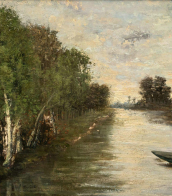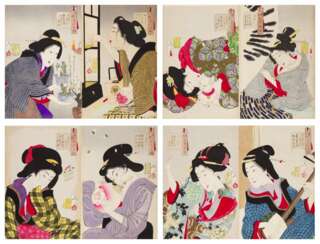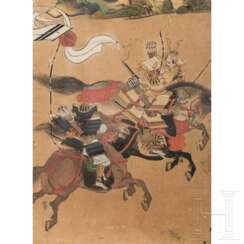meiji

Utagawa Hiroshige (Japanese: 歌川 広重) was a Japanese ukiyo-e artist, considered the last great master of that tradition. Hiroshige is best known for his horizontal-format landscape series The Fifty-three Stations of the Tōkaidō and for his vertical-format landscape series One Hundred Famous Views of Edo. The subjects of his work were atypical of the ukiyo-e genre, whose typical focus was on beautiful women, popular actors, and other scenes of the urban pleasure districts of Japan's Edo period (1603–1868). The popular series Thirty-six Views of Mount Fuji by Hokusai was a strong influence on Hiroshige's choice of subject, though Hiroshige's approach was more poetic and ambient than Hokusai's bolder, more formal prints. Subtle use of color was essential in Hiroshige's prints, often printed with multiple impressions in the same area and with extensive use of bokashi (color gradation), both of which were rather labor-intensive techniques.



Salomon "Sal" Meijer was a Dutch painter, primarily known for his paintings of cats and Amsterdam city views. Works by Meijer are on view at the Jewish Historical Museum and the Kattenkabinet cat museum in Amsterdam, among others. In his youth, he worked in the diamond industry while studying art. He devoted himself full-time to painting in 1914. His first one-man exhibition was in 1926. Meijer's work was included in the 1939 exhibition and sale Onze Kunst van Heden (Our Art of Today) at the Rijksmuseum in Amsterdam. Due to the simplicity of Meijer's paintings and his modest attitude - he did not regard his paintings as works of art but as craftmanship - his work was often labeled as "naive" and "primitive". However, a re-evaluation of his work began in 1957 with the article by Kasper Niehuis.





































































